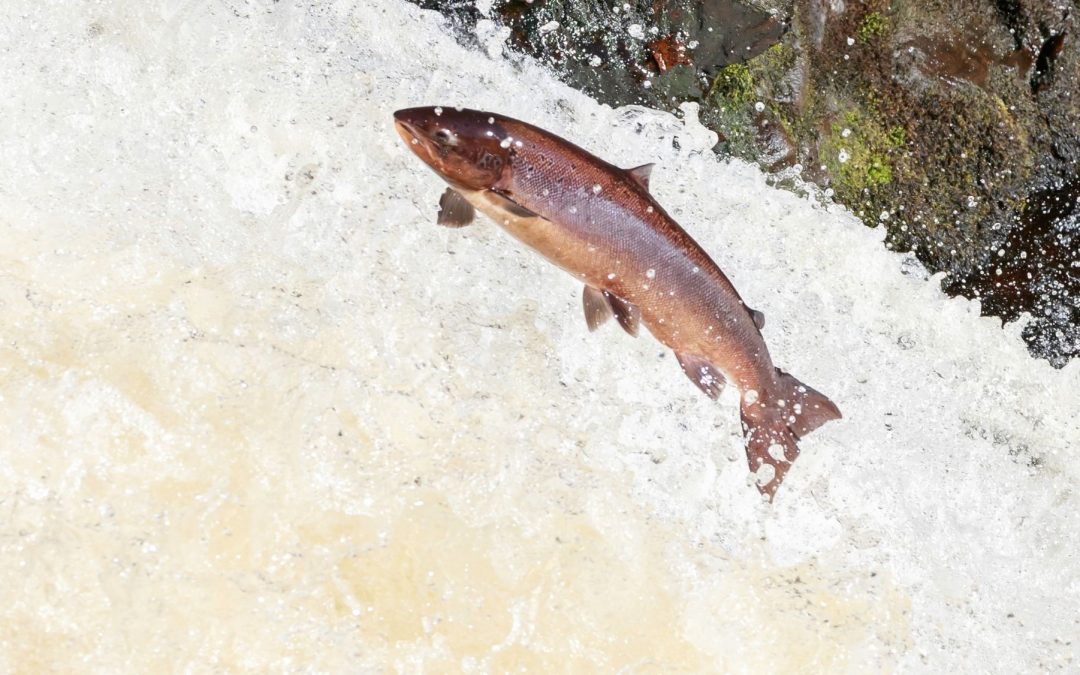Australia’s aquaculture industry has grown significantly in the last two decades, with a reputation for high-quality and sustainable produce that’s gone a step further with the recent launch of the Australian Marine Conservation Society’s GoodFish initiative.
On the whole, Australia farms and produces more than 40 species, but the following are some of the most farmed.
These seafood species are found all around the Australian coast, providing year-round production, with farmers now employing new innovative and sustainable means for maintaining seafood freshness and quality for both export and commercial consumption.
Atlantic Salmon
Atlantic salmon is widely considered the most popular fish dish in Australia, particularly during festive seasons. Although not native, it has a high-valued farming industry in Tasmania worth $1 billion per annum. The Atlantic salmon reaches its most harvestable stage at 16 to 18 months, and has high demand both domestically and across Asian markets.
Barramundi
Barramundi is another popular fish among Australians. The traditional and iconic silver-scaled barramundi is found on Australia’s north-western coast, spawned through September to March and conveniently cultivated in both freshwater and saltwater tanks. Its rarer counterpart, the golden barramundi, is currently in high demand for its whiter, fresher tasting flesh.
King Prawns
Both king prawns and tiger prawns are farmed in Australia, mostly along the eastern coast with peak seasons being around Christmas and before Easter, harvested for commercial markets at 5-7 months.
Classed as shellfish, prawns quickly spoil after loss of life. Although prawns can be frozen, high-tech seafood transport tanks are becoming increasingly popular among Australian aquaculture businesses, which have provided the advantage of keeping the product alive and fresh for both marketplace and restaurant trade.
Blue Mussels
Australian blue mussels are cheap and popular, consumed at domestic restaurants and at home as a versatile and easy-to-prepare seafood dish. This is due to blue mussels being available year-round in Australia, farmed widely across the coasts of New South Wales, Victoria, South Australia and south Western Australia.
Blue Swimmer Crab
Blue swimmer crabs populate most of Australia’s coast, but have most yearly farming output in Queensland between July and August. As shellfish, blue swimmer crabs spoil within a few days after loss of life. And similarly with prawns and shrimps, live crab tank systems have fast become the industry’s most functional solution for maintaining the highest quality of the product.
Western Rock Lobster
The western rock lobster – also nationally called crayfish – are found in Western Australian waters. Along with the eastern rock lobster, it is produced year-round. Considered a luxury dish, rock lobsters are another shellfish product that Australian fishermen and wholesalers face the pressure of selling within just a day or two. The meat is also commercially sold cooked and frozen, however this comes at the cost of quality and financial yield.
Abalone
Abalone, a type of mollusc, are considered a nutritious and sweet delicacy in Australia. These are found and farmed across Australia’s southern coasts, with peak seasons between October and May. Commercially, freshly cut and cleaned abalone meat is frozen to be sold (with a shelf life of two months), but high-end Australian seafood restaurants are now benefiting from live onsite supply, kept in bulk live holding tanks, cooked to serve.
Oysters
Oysters in Australia include Native, Sydney Rock and Pacific oysters, generally farmed along the South Australian coast through April to September, with Sydney Rock oysters from September to March. Mention the Pacific oysters that are farmed in Tasmania.
Oysters are another seafood product often producing quality issues for aquaculture businesses. This is yet another reason why Australia’s aquaculture industry has turned to advanced live seafood tank systems, where oysters – and other shellfish products – can be kept live, stress-free and fresh for up to 6 months.
Live Seafood Holding Tanks – The New Industry Solution
Many types of seafood – especially shellfish such as prawns, crabs, lobster and oysters – spoil both after loss of life and when removed from their natural habitat, presenting various problems for restaurants, restaurant suppliers, wholesalers and exporters when it comes to preserving optimum seafood product quality.
Live seafood holding tanks have moved to the forefront as the best solution for keeping live seafood prime during the transport and onsite holding stages of the aquaculture process, and our patented Oceantronic© system from Austmarine has been intelligently engineered over 35 years to fulfil that purpose for global markets, utilising tried and tested technology that regulates temperature, controls water quality and removes the need for frequent cleaning.
Our range includes live fish transport tanks and bulk live holding tanks in a range of sizes for different applications. Take a look at our product ranges by visiting Austmarine products.


Recent Comments